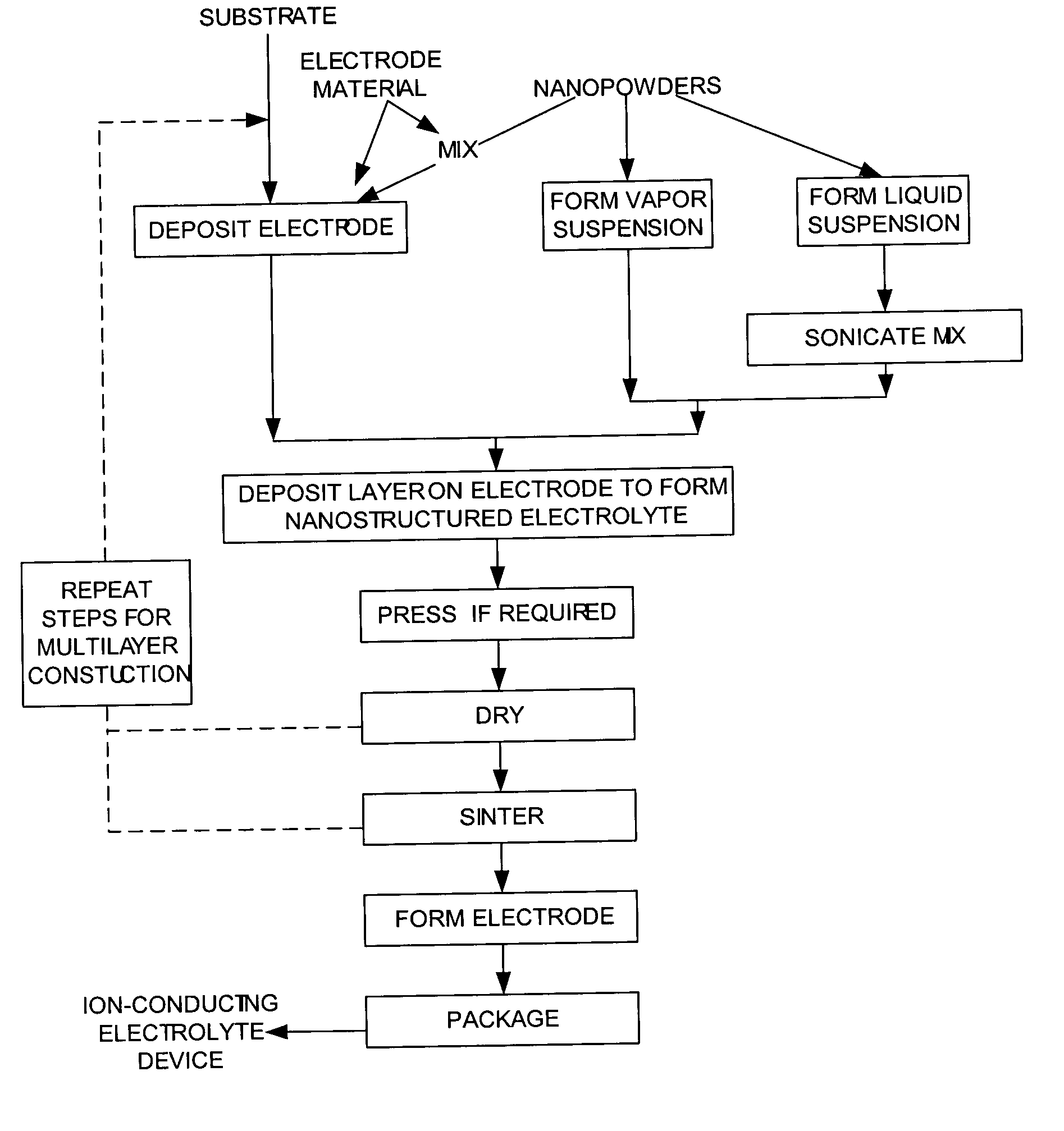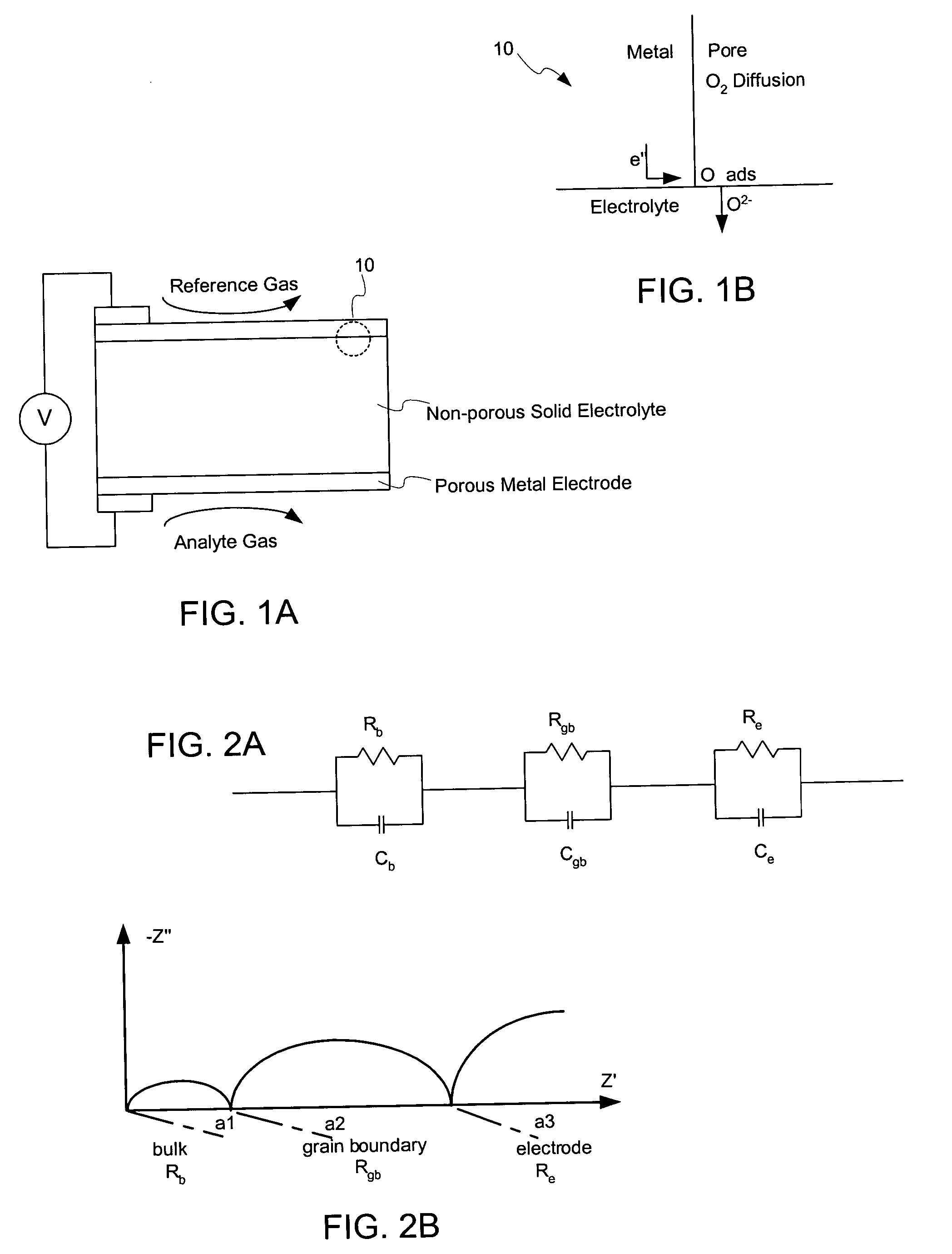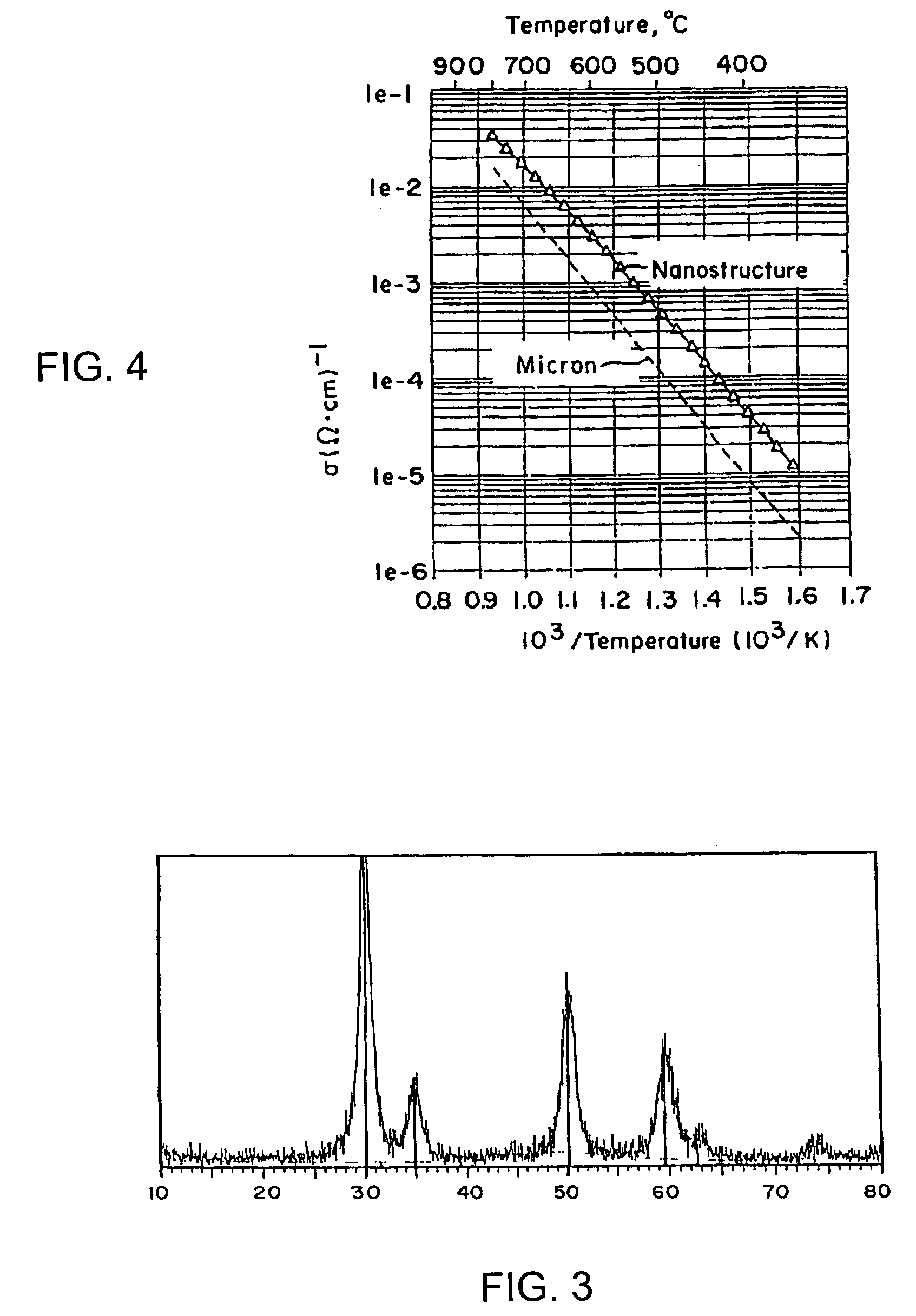Nanostructured powders and related nanotechnology
a nanotechnology and nanostructure technology, applied in the field of nanostructured powders and nanoscale powders, can solve the problems of increasing equipment mass and size, increasing equipment cost, and attendant sealing problems, and reducing the commercial viability of products, so as to reduce the cost of manufacturing and reduce the cost of operation
- Summary
- Abstract
- Description
- Claims
- Application Information
AI Technical Summary
Benefits of technology
Problems solved by technology
Method used
Image
Examples
example 1
[0059]A stock solution was prepared from ZrOC12.8H2O and 9 mol % Y2O3 in water, and diluted with denatured ethanol. The solution was chilled to 0° C. and then slowly added to a continuously stirred basic solution of ammonium hydroxide that was also maintained at 0° C. Precipitation of white precursor powder was instantaneous. The precipitate solution was suction filtered, and the gelatinous filter cake was washed in denatured ethanol three times. The loose powder so generated was dried quickly with mild heating at 100° C. to remove water and ethanol, and calcined to 500° C. in air to form nanocrystallites with grain size of about 5.8 nm, standard deviation of 1.1 nm. This precursor material consisting of 9 mole-percent yttria stabilized zirconia (YSZ) nanoscale powders was examined using, an X-ray diffractometer (XRD). A typical XRD pattern for the 9 mole powders so produced is illustrated in FIG. 3, which shows that the ZrO2 is stabilized cubic phase. In order to determine the aver...
example 2
[0062]Bismuth nitrate (Bi(NO3)3.5H2O) and yttrium nitrate (Y(NO3).6H2O), were used as precursors for preparing nanosized yttria stabilized bismuth oxide (YSB) powder via solution co-precipitation. FIG. 6 shows a flow chart of the co-precipitation processing steps used in this example. After precipitation, the precipitate solution was suction filtered, and the gelatinous filter cake was washed in acetone to minimize agglomeration of ultrafine powder due to hydrogen bonding. The loose powder so generated was next dried with mild heating to remove water and acetone. Then the powder was calcined in air at 500° C. for 2 hours. XRD showed that calcine schedule resulted in a single cubic YSB phase (see FIG. 7). The volume averaged crystallite size of the powder fired at 500° C. was determined to be 12.5 nm by analyzing the broadening of the (111) diffraction peak and applying Scherrer's formula. The YSB nanopowder was characterized in terms of morphology and particle size by transmission e...
example 3
[0065]YSB electrolyte pellets, 19 mm in diameter and 0.9 mm in thickness, were sintered from green pellets of 25 mm in diameter and 1.2 mm in thickness. The pellets were ground and polished to a thickness of 0.7 mm to provide a suitable electrolyte substrate. A separate composite paste of 79 vol % Ag and 21 vol % YSB was prepared by mixing nanopowder of YSB and unfritted Ag paste (marketed by the Cermalloy Division of Heraeus Incorporated of West Conshohocken, Pa., under Catalog No. C440OUF). The paste was printed onto both sides of the pellet to form electrodes, and then the pellet was fired at 800° C. for 10 minutes to sinter the electrolyte without densifying it beyond the point necessary to provide a robust structure and form a stabilized sensor cell with porous composite electrodes (about 18% porosity). Then Ag wire was attached to both electrodes with a contact of Ag epoxy which was fired at 730° C. for 2 minutes. It is noted that the composite-electrode / electrolyte structure ...
PUM
| Property | Measurement | Unit |
|---|---|---|
| Grain size | aaaaa | aaaaa |
| Grain size | aaaaa | aaaaa |
| Grain size | aaaaa | aaaaa |
Abstract
Description
Claims
Application Information
 Login to View More
Login to View More - R&D
- Intellectual Property
- Life Sciences
- Materials
- Tech Scout
- Unparalleled Data Quality
- Higher Quality Content
- 60% Fewer Hallucinations
Browse by: Latest US Patents, China's latest patents, Technical Efficacy Thesaurus, Application Domain, Technology Topic, Popular Technical Reports.
© 2025 PatSnap. All rights reserved.Legal|Privacy policy|Modern Slavery Act Transparency Statement|Sitemap|About US| Contact US: help@patsnap.com



